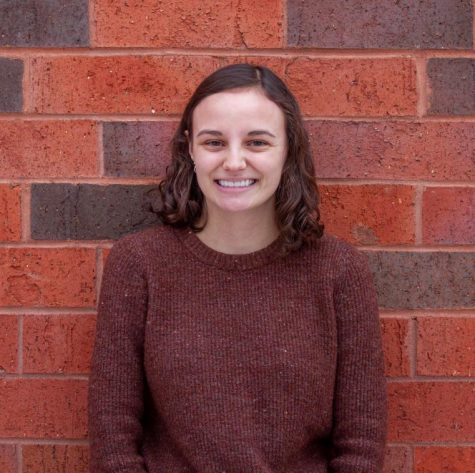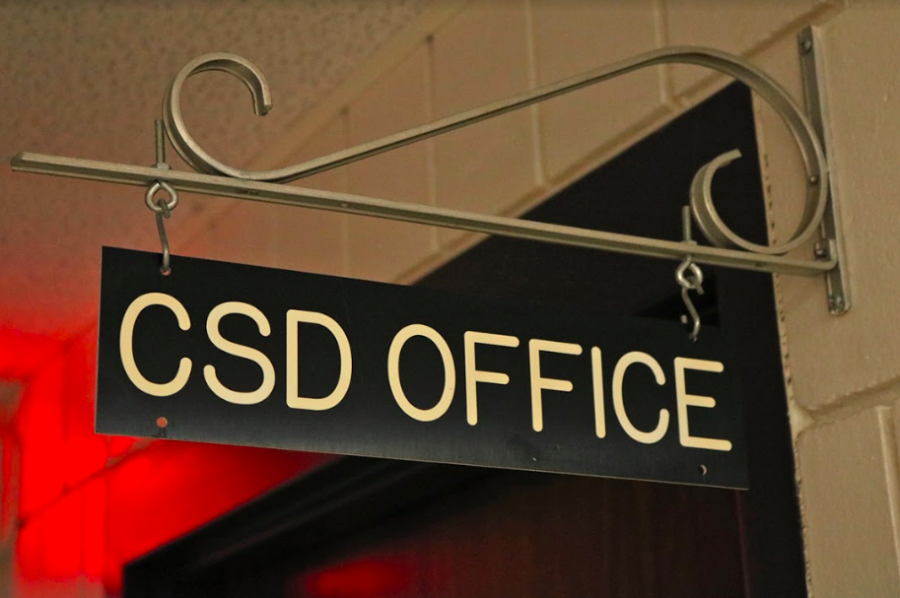Collaboration is key for the CSD department in the midst of receiving award
This year, the Departmental Board of Regents Teaching Excellence Award went to UWEC’s communication sciences and disorders department
Photo by Sam Farley
In addition to a commemorative plaque, the award includes a $5,000 bonus which will be used to support the CSD department.
In describing how she received the 2019 Departmental Board of Regents Teaching Excellence Award, Vicki Samelson said four accompanying faculty members joined her.
“We all went up together,” she said.
Samelson, the department chair; Dean of the College of Education and Human Sciences, Carmen Manning; associate professors Tom Sather and Abby Hemmerich and assistant professor Thomas Kovacs traveled to Madison on Friday to accept the award on behalf of UW-Eau Claire’s communication sciences and disorders faculty, staff, students and clients.
“Each recipient came to the podium to accept the award and share their perspectives on teaching and learning,” Samelson said.
The department received a commemorative plaque, which Samelson said will be displayed in the department. The award also came with a $5,000 prize, which she said will “support teaching and learning in our department.”
Jerry K. Hoepner, an associate CSD professor, said he was personally elated the department received this award.
“We work really … hard to be intentional about our teaching, … but we’re also really responsive to student needs,” Hoepner said. “ … We’re constantly seeking their feedback and using that feedback to help develop things, so it’s really nice to be recognized for that work.”
The CSD department has a history of exploring teaching approaches, Hoepner said. This history of dedication, he said, lends itself to one of the reasons why the department received the award: their collaborative teaching.
With both faculty members who are new and members who have been a part of the department for some time, Hoepner said collaborative teaching, or co-teaching, takes place in some of the foundational courses in the department, like “Anatomy and Physiology of Speech and Hearing.”
“Instead of having one faculty member teach, we have two faculty members teach the course,” Hoepner said.
Hoepner said oftentimes one of the instructors will have particular expertise that aligns with some of the course content and the other instructor will have expertise that aligns with some of the other course content.
He said collaborative teaching is valuable because it allows instructors to become more responsive to student needs.
In some instances, if the instructor with the particular expertise for a unit is explaining a complex issue, he said the other instructor encourages the instructor with the particular expertise to break the concept down for students, so they can understand it.
“I think one of the greatest values of that type of teaching is it really addresses your blind spots,” Hoepner said. “When you have taught something for a while, it becomes really intuitive and you think ‘Everyone understands this’ and just having someone else there saying ‘so you said (something), let’s really unpack that’ — that can be really valuable.”
Student-faculty research and extra-curricular learning experiences are additional ways that collaboration serves as a key part of the department, Hoepner said.
“We really recognize through some of the extra-curricular learning experiences that those really not only foster learning in that context but foster better learning when students return to the classroom context,” Hoepner said.
Oriana Vile, a third-year CSD and psychology student, said she appreciates how helpful the CSD professors are and how they offer unique experiences to undergraduate students.
“I really like how, as an undergrad, you can get a lot of clinical work in,” Vile said. “A lot of people can’t get that.”
Hoepner attested to the fact that collaboration, as with Vile’s experiences, transcends all groups who are a part of the CSD department.
“We have just a real culture of evidence-based learning and collaboration in this department and that is infused across students and faculty … across graduate level teachers to freshman,” Hoepner said. “We try to level that playing field and create that idea that we’re all collaborative learners — (the idea) that we can learn from students and they can learn from us.”
Van Sistine can be reached at vansistr6741@uwec.edu.

Ta’Leah Van Sistine is a fourth-year journalism and creative writing student. This is her seventh semester on The Spectator staff. She is spending the semester at Queens College in New York City. When she is not reporting for The Spectator or Blugold Radio Sunday, she enjoys getting lost in a good book or a national park.

